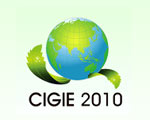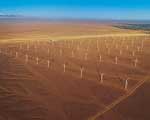New-energy cars take off in China with government support
(Xinhua)
2010-12-10 11:27
|
|
HEFEI - Prompted by a series of preferential government policies, Wu Lingyu abandoned her plan to buy a petrol-driven car. She decided to buy a battery-powered one instead.
Wu, a 36-year-old white-collar worker in the east China city of Hefei, said she only needs 80,000 yuan ($12,100) for an electric vehicle (EV) worth 150,000 yuan.
"That is because I can get a 60,000 yuan subsidy from the central government and 10,000 yuan from the local government," she said.
"And, if I am one of the first 500 buyers of battery-operated cars in Hefei, the local electricity authorities will also install a charging facility near my home for free," she said.
What's more, Wu said, she can save money.
"A petrol-driven car consumes about 10 liters of oil for every 100 kilometers and that costs about 60 yuan. A battery-operated car consumes about 14 kilowatt per hour of electricity for every 100 kilometers and that costs only about eight yuan," she said.
"If I drive a long way, I can install a range-extender on the car, which can charge the battery while I am driving," she added.
The Chinese government introduced policies this year to boost the new-energy auto industry.
Hefei is one of five Chinese cities in the pilot program for the new subsidies. The other four are Shanghai, Changchun, Shenzhen and Hangzhou.
According to the new policy, the central government pays a subsidy of up to 50,000 yuan to any citizen that buys a plug-in hybrid vehicle (PHEV) and 60,000 yuan for an all-electric, or battery-electric vehicle (BEV).
Local governments also pay subsidies.
In Hefei, BEV buyers can receive a 10,000-20,000 yuan local government subsidy and in Shanghai they can get 40,000-50,000 yuan.
China has a goal for the future development of the new-energy auto industry. It aims to have more than 500,000 BEV and PHEV cars on the road by 2015 and five million by 2020, the development plan on China's energy-efficient and new-energy autos unveiled in September said.
China had a total of 199 million motor vehicles on its roads at the end of September, including 85 million cars, according to the Traffic Management Bureau of the Ministry of Public Security.
"By 2020, the number of cars in China is likely to hit 200 million, which will make problems like energy security, environment protection and traffic congestion more prominent," said Prof. Liu Gang at the School of Economics at Tianjin-based Nankai University.
"Therefore, it will be inevitable the use of new-energy vehicles will increase," he said.
According to China's blueprint, the government will help create one or two automakers that can each produce more than one million new-energy cars per year by 2020. It will also help establish three to five automakers which can each produce more than 500,000 new-energy cars per year.
"We are optimistic about the future," said Yuan Tao, vice-president of the Chery Automobile Co Ltd., a well-known domestic automaker based in the east China's Wuhu City.
He said Chery has launched a new BEV model last month, the Riich M1-EV, which the white-collar worker in Hefei, Wu Lingyu, intends to buy.
"We have received 300 orders so far," Yuan said. "We predict that Chery can sell at least 10,000 BEVs next year."
He said Chery spends 7-12 percent of its sales income on research and development every year, with much of it going into new-energy cars. In 2010, some 2.4 billion yuan will be spent on research and development, he said.
Although there is no accurate figure for the present number of new-energy cars in China, one thing is certain: the Chinese public is yet to widely accept BEVs and PHEVs because of the limited number of charging stations.
In response, Yuan said: "I think it makes little sense to talk about the number and consumption of new-energy cars for now. What we should do now is to make excellent products and offer high-quality service. Then there will be more buyers."
Like Chery, Wuhan-based Dongfeng Motor Corporation has also made the development and production of new-energy cars a priority.
"We will invest three billion yuan over the next five years to develop new-energy cars," said Zhou Wenjie, vice general-manager of the company.
"By 2015, our production of hybrid electric vehicles (HEVs) will reach 100,000 and that for BEVs will reach 50,000," he said.
In addition to supporting domestic automakers, China also welcomes international cooperation in developing new-energy cars.
"China encourages domestic businesses to strengthen cooperation with foreign EV manufacturers, including those from Japan, Europe and the United States. Working together can boost the development of the EV industry," Gao Dongsheng, deputy director of the Department of Energy Conservation and Resources Utilization with the Ministry of Industry and Information Technology, told reporters in November.
| ||||
Under the plan of State Grid, a state-owned power company, China will build 4,000 BEV charging stations over the next five years. By 2020, the number of charging stations will reach 10,000.
"China's new-energy auto industry will soon enter a period of fast-growth, which will greatly contribute not only to the country's industrial upgrading process, but also reduce emissions," Liu Gang said.







